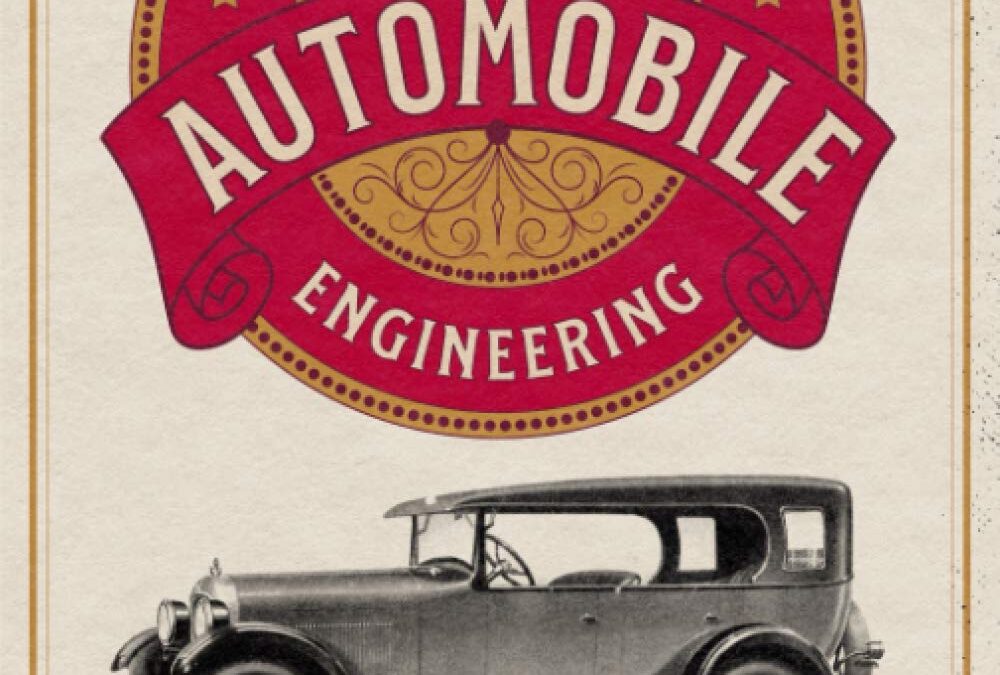
Volume 5 concludes the in-depth five-part series with detailed antique car wiring diagrams, data sheets, and a thorough look at classic electrical systems.
The Classic Cars and Automobile Engineering series spans five volumes with more than 1500 images and diagrams for enthusiasts, collectors, and mechanics. Volume 5 includes:
– Digitally restored images and diagrams
– Big 7” x 10” pages
– Easy to read writing style
– Author’s original page layouts
– Classic type font and hand-drawn lettering
– Bold retro-style cover
Everything that you ever wanted to know about the inner workings of antique cars, trucks, bikes, engines, tractors and more are included in this expansive tome of knowledge. Originally printed in 1926, this vast wealth of knowledge for classic car lovers was digitally restored and enhanced by writer-historian Mark Bussler and the CGR Publishing Restoration Workshop for a new generation of automobile enthusiasts.
This detailed, illustrated book collection is a must-have reference guide for all owners of period automobiles, motorcycles, airplanes, and anything powered by early 20th-century engines. Enlarged and printed on large 7” by 10” pages, The Classic Cars and Automobile Engineering series is designed for easy reading in the shop or library. Volume 5 focuses on electrical systems, wiring diagrams and data sheets.
Included subjects: How to read wiring diagrams – symbols – charts – generators – lamp voltages – dimming devices – electric horns – ignition timing – spark plugs – distributors – currents – methods of regulation – proper conduction – hydrometer tests – low battery – electric gear shifts – and more.
Includes wiring diagrams and datasheets for Apperson, Buick, Cadillac, Case, Chalmers, Chandler, Chevrolet, Chrysler, Cleveland, Cole, Cunningham, Davis, Dodge, Dort, Duesenberg, Durant, Essex, Ford, Flint, Franklin, Gardner, Gray, Haynes, Hudson, Hupmobile, Jackson, Jewett, Jordan, Kissel, LaFayette, Lexington, Lincoln, Marmon, Maxwell, Mercer, Moon, Nash, National, Oakland, Oldsmobile, Overland, Package, Paige, Peerless, Pierce-Arrow, Rco, Rickenbacker, Rollin, Rolls-Royce, R&V Knight, Star, Stephens, Studebaker, Stutz, Wills Sainte Claire, Willys-Knight, and Winton.
Table of contents:
– Chapter 1: Reading Wiring Diagrams and Auxiliary Electrical Equipment
– Chapter 2: Wiring Diagrams and Data Sheets
– Chapter 3: Summary of Electrical Principles
– Chapter 4: Ignition Instructions
– Chapter 5: Generators
– Chapter 6: Wiring Systems
– Chapter 7: Battery
– Chapter 8: Glossary of Automobile Terms
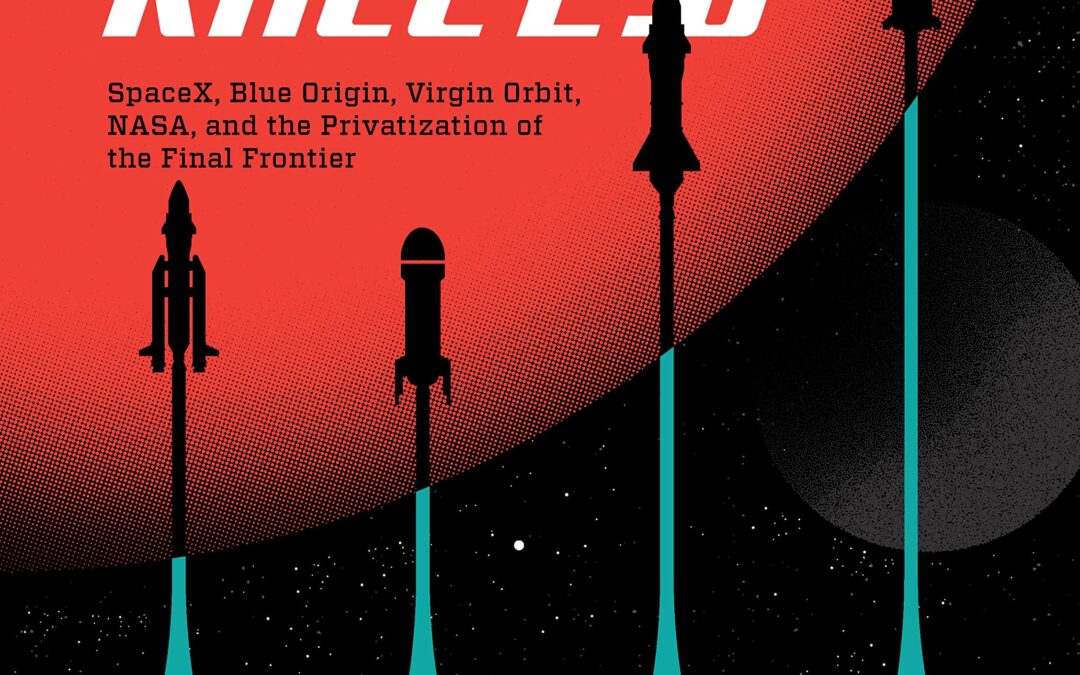
Space Race 2.0 is the only authoritative photographic history of the efforts of private companies—often alongside NASA—to accelerate humankind’s exploration and understanding of the final frontier.
The private space sector is growing tremendously. The industry’s consensus leader, SpaceX, headed by outspoken billionaire Elon Musk, is today worth an estimated $74 billion. And SpaceX and its chief competitors, Blue Origin and Virgin Galactic, are taking on more roles—flying cargo, supplies, and astronauts to outer space. Space Race 2.0 tells their story with expertly written text by science journalist Brad Bergan and stunning photography of the spacecraft, key players, and facilities in California, Texas, and Florida.
In the 1950s and ’60s, the first Space Race pitted two political ideologies against one another: either Communism or Capitalism would prove superior. Ultimately, the US landed on the moon, the race’s crowning achievement. Now, more than a half-century later, the Space Race has pivoted from a contest between ideological rivals to private aerospace firms competing for contracts.
Today, rather than symbolic goals motivated by patriotism, the defining success of a launch system extends beyond engineering and science to image and ROI. Founded in 2002, SpaceX’s trajectory was determined by Musk’s realization that he could achieve higher profits by vertically integrating—manufacturing his own rockets and spacecraft—rather than relying on third parties. The decision was prescient, resulting in a state-of-the-art headquarters in Hawthorne, California, and a series of stunning achievements.
Space Race 2.0 follows the development of commercial space exploration to the present. While tentative first steps in private ventures are covered, such as those by Space Services Inc. and Orbital Science in the 1980s and ’90s, the focus is on today’s major players: SpaceX, Blue Origin (headed by Amazon founder Jeff Bezos), and Virgin Galactic (founded by Richard Branson). While examining the hardware, Bergan also explores such considerations as the importance of design-forward equipment and the endgame: what ultimately is “in it” for firms at the forefront? Natural resources? NASA and ESA contracts? Commercial travel? Communications? And what legal boundaries, if any, restrain corporate interests in space?
Space Race 2.0 is the ultimate visual look at this relatively young industry, looking back at recent remarkable decades—and ahead to what the future might bring.
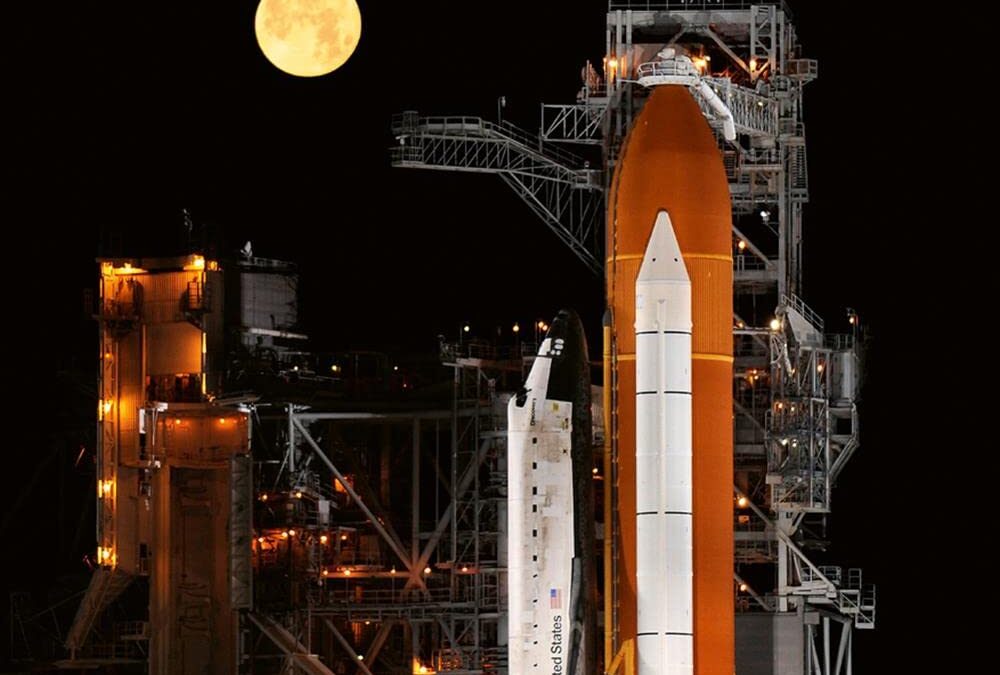
- A stunning coffee table book of historically significant NASA photos
- Amazing photographs complemented by quotes and stories from noted personalities at NASA
- A chronological journey through NASA’s history, from Apollo to the James Webb Telescope
- Awe-inspiring, inspirational and motivational, a perfect gift and a must for your library
- Quotes from astronauts Commander James Lovell and John Glenn, as well as John F Kennedy, Ralph Waldo Emerson and many more
“The history of space exploration is best presented in this book of NASA photographs, whose images are universally inspirational.” – Commander James Lovell, Apollo 13
NASA has worked at the forefront of space exploration and research since 1958. Their devotion to furthering our understanding of what lies beyond our atmosphere has seen 12 humans walk on the surface of the moon, helped form the International Space Station, and placed numerous rovers on Mars. Voyager 1, launched by NASA on 5 September 1977, is the furthest manmade object from earth, having left our solar system entirely – and the agency’s plans for the future are equally inspiring.
This book celebrates NASA throughout the years, from its inception to its 60th anniversary in 2018, and beyond. A visual tour-de-force, the book collects high resolution NASA photos of historic significance; from rarely seen photos and the words of President John F. Kennedy commanding the space race, to the many triumphs and tragedies of the Apollo Missions, moon landings, the International Space Station, space shuttles, journeys to Mars and explorations of our galaxy’s outer reaches. These breathtaking images are complemented by heartfelt words of hopes and imagination for the future, encouraging readers to admire their world from a different perspective. NASA: the Greatest Milestones is a stunning 300 page book.
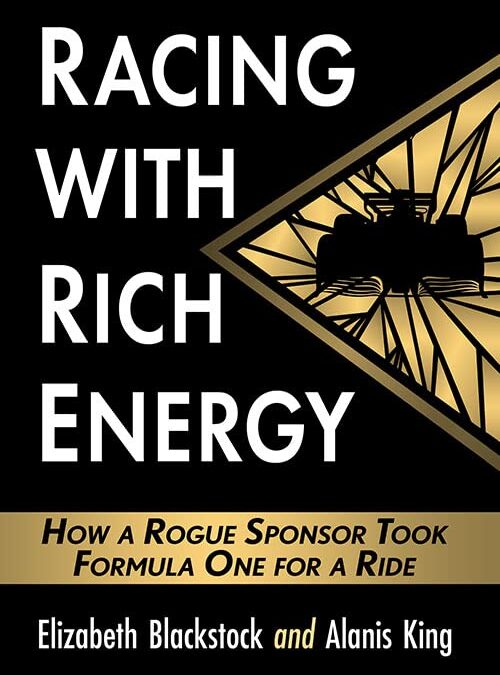
Formula One has long maintained a glitzy aura that masks dark and strange goings-on in the background. But with the 2019 season came a force louder than Formula One could dream of muffling: William Storey, the founder of British energy drink startup Rich Energy. Storey became a multimillion-dollar sponsor of the Haas Formula One team a year after records showed Rich Energy having a mere $770 in the bank. He equated his doubters to moon-landing truthers and publicly mocked both the Haas team and the entities winning legal disputes against him. But where were actual cans of Rich Energy, and did the supposed sponsorship funds exist? In the six months between Storey’s first race as a Formula One sponsor and his very public exit, he stole the spotlight with a loud mouth and an active Twitter account. Haas team boss Guenther Steiner once described the Rich Energy news cycle as: “I’m getting sick of answering these stupid fucking questions on a race weekend. I’ve never seen any fucking thing like this.” No one else had, either. This book uncovers the complete, bizarre story.
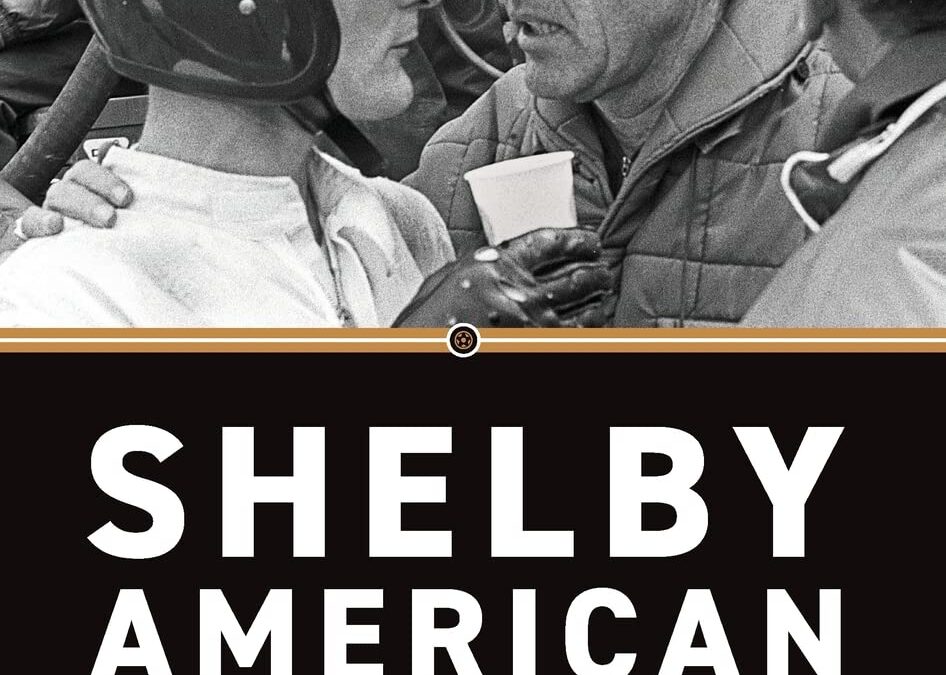
Shelby American didn’t last long, but it was a flame that burned incandescently before being extinguished by corporate politics. In less than a decade, it created a legacy that will be revered as long as cars still roar around racetracks. Now, on the sixtieth anniversary of the founding of this iconic company, Shelby American: The Renegades Who Built the Cars, Won the Races, and Lived the Legend relates how the saga unfolded, as told by the men and women who were there at the time.
Although Carroll Shelby was the focal point of the publicity his company generated, Shelby American was staffed by a who’s who of racing legends, from Phil Remington and Ken Miles to Peter Brock and Carroll Smith. And while the shop is often depicted as a menagerie of Southern California hot rodders, it also embraced mechanics and fabricators from Canada, England, Switzerland, Australia, and New Zealand. Like the Cobra itself, the company magically came together as a whole that was greater than its constituent parts.
By incorporating the recollections of dozens of lesser-known crewmen, Shelby American goes behind the scenes to tell long untold and misunderstood stories―the cheat embedded in the turbine Indy car, the oiling woes that sunk the tunnel-port Trans-Am Mustang, even details about the build of the first Cobra in Dean Moon’s cramped garage in Santa Fe Springs. The book also delves into the personalities and hijinks that made Shelby American such a vibrant place to work, whether they were transforming humdrum Mustangs into race-ready GT350 or fighting shop wars with cherry bombs and M-80s.
Always standing above it all was Shelby himself. Dynamic, charismatic, mercurial, mercenary, and a little bit dangerous, he had to fight Ford bean counters as fiercely as he dueled with Enzo Ferrari. But for a few magical years, Shelby managed to beat both of them at their own games.
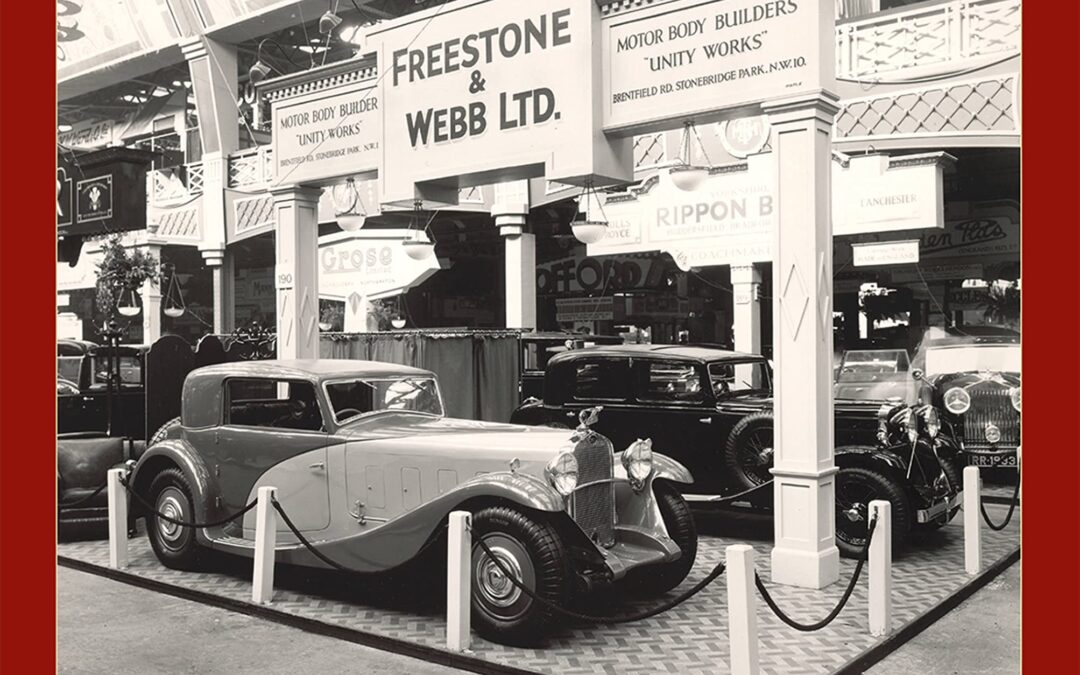
Freestone & Webb was a great name in British coachbuilding for some 35 years, but as demand for coachbuilt car bodies dried up in the 1950s, the company became the first of the Big Five remaining specialists to close down.
They had started in the early 1920s, as the motoring scene was settling down after the upheaval of the First World War. Early devotees of lightweight Weymann construction, they soon earned the approval of the nearby Bentley company because their bodies did not unduly hinder the performance of these great sporting chassis. Before long, Rolls-Royce models were also being provided with stylish and well-made Freestone & Webb coachwork, and so were many leading foreign chassis, such as Mercedes-Benz and Packard.
Although the partnership of Messrs Freestone and Webb was dissolved before the 1930s had got under way, the company survived the bleak years at the start of the decade and continued to build both arrestingly beautiful bespoke bodies and distinctive coachwork in small-volume batches. Most notable in this period was their razor-edge style, which was rapidly copied by many other coachbuilders and would remain influential into the early 1950s.
Like others, the company struggled to get back into the game after an enforced layoff during the Second World War. But with the aid of good designs and fine workmanship, they survived into the 1950s with their reputation intact. Sadly, their continued survival could only be a matter of time, and Arthur Webb was already looking to sell the company when he died in 1954. Freestone & Webb continued gamely for four more years, experimenting with new designs and going out in a blaze of glory with their extravagant Honeymoon Express for a Rolls-Royce Silver Cloud.
This is the story of a great British coachbuilder, told with the aid of meticulous research and with great affection for the grandeur and style that its products still represent.
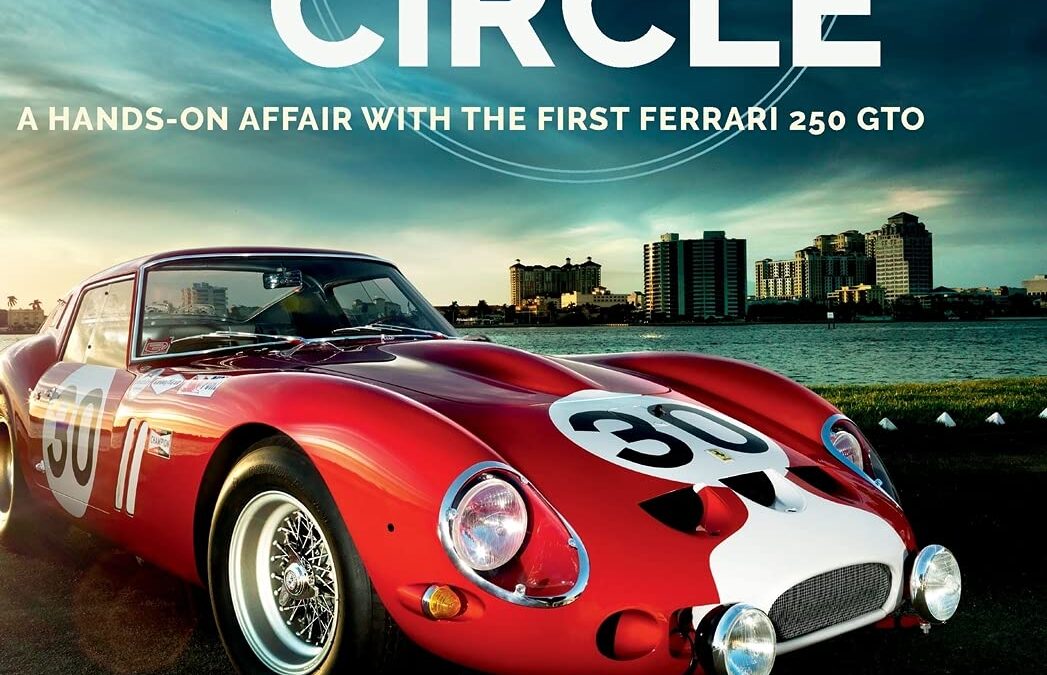
FULL CIRCLE: A Hands-on Affair with the First Ferrari 250 GTO may be the first car memoir – a car revered for its international racing performance and artistic mystique – the first Ferrari 250 GTO, born in Italy in 1962.
It is also the memoir of a man, himself unique – Larry Perkins, a rocket scientist /car racer /artist. His stories chronicle how The Car (a.k.a. “Sophia” named for the elegant Italian bombshell Sophia Loren) pops in and out of his life. These events, and the people associated with them, create a series of full circles in their shared journey.
Full Circle: the past becomes future becomes past, illuminating words to the famous song… “When Everything Old is New Again”.
While Larry was working on the Apollo program to land a man on the moon, and later the Viking Mars Lander program and other space missions, Sophia and Larry had an on-again off-again relationship – an “affair” so to speak – for over 50 years. They found each other in 1963 and formed a surprising dynamic of man-machine synergy. Life was fast and furious, fun and full of trophies. When it seemed destined to be over, Larry sold the Ferrari in 1966 for a mere $3600. The racing duo lost track but were re-united and then parted again. Finally … unbelievably … Sophia found Larry when they were both a little older. With the spark alive, their racing history was re-born in a most spectacular way. Each was transformed by the other.
The memoir starts with a man searching for the perfect race car and develops into a previously unrecorded history of s/n #3223 GT with racing tales. Larry and his wife, Petra, tell of an irresistible GTO attraction and adventures during the exciting era of ’60s sports car racing. (Petra first saw the Ferrari at a memorable race with a fiery crash at Sebring, Florida, when she was 15, but did not meet its driver for 15 more years.)
The authors show the exhilaration of key races and an anecdotal chronology of #3223 with photos, some never seen. They examine what a race driver is really like, the attributes of a highly competitive personality, and the unrelenting dedication to Winning. After all, it was not easy for a small privateer – someone who had started racing relatively late in life (with a consuming day job) – to compete with the likes of racing champions Phil Hill, Pedro Rodriquez, Mario Andretti, and Dan Gurney.
The book emphasizes the value of teamwork. “Doing the impossible” – in racing or rocketry – demands the best of humans working together to render perfect machines. This is an intimate account about the people who made The Car what it ultimately became.
How did this car acquire its timeless aura of mystique?
How cool is it to drive such a powerful and exquisite piece of machinery?
To what degree can a car be considered fine art?
What happened to Larry and why did it turn out to be so spectacular, almost eclipsing his early successes in racing the GTO? When and Where did all this happen?
And best of all, Who are the passionate people that made it happen?
Full Circle: A Hands-On Affair with the First Ferrari 250 GTO answers these questions and provides readers with a thrilling personal play-by-play of racing the very first Ferrari GTO for the very first time.
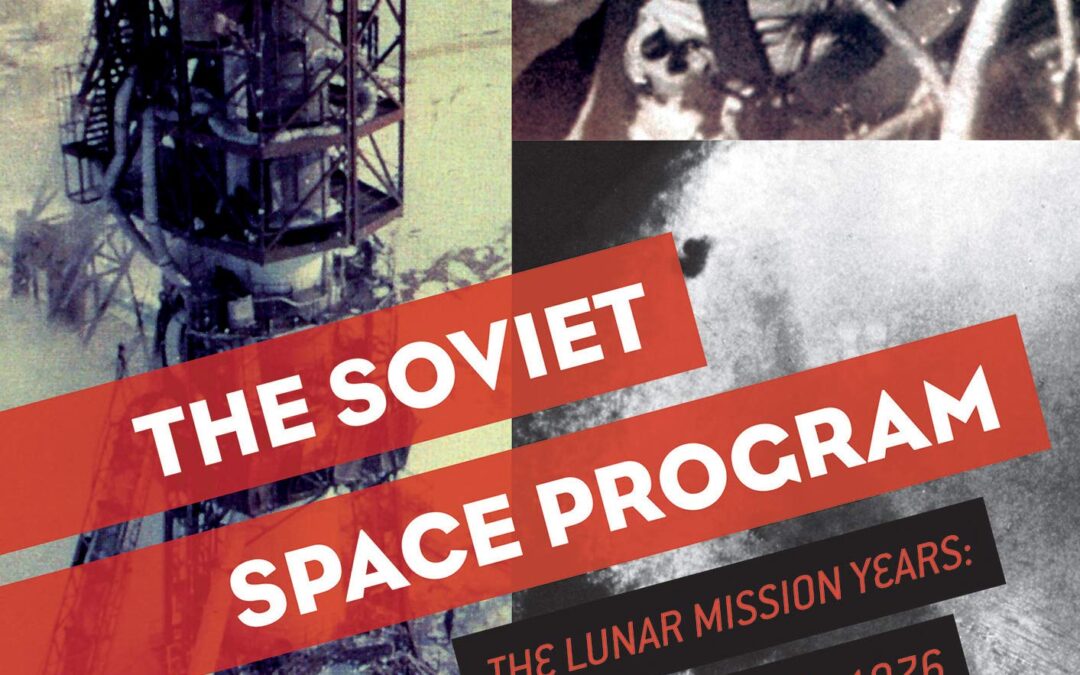
The N1 was the booster rocket for the Soviet manned moon program and was thus the direct counterpart of the Saturn V, the rocket that took American astronauts to the moon in 1969. Standing 345 feet tall, the N1 was the largest rocket ever built by the Soviets and was roughly the same height and weight as the Saturn. Though initially ahead of the US in the space race, the Soviets lagged behind as the pace for being first on the moon accelerated. Massive technical and personnel difficulties, plus spectacular failures, repeatedly delayed the N1 program. After the successful American landings on the moon, it was finally canceled without the N1 ever achieving orbit. The complete history of this rarely known Soviet program is presented here, starting in 1959, along with detailed technical descriptions of the N1’s design and development. A full discussion of its attempted launches, disasters, and ultimate cancellation in 1974 completes this definitive history.
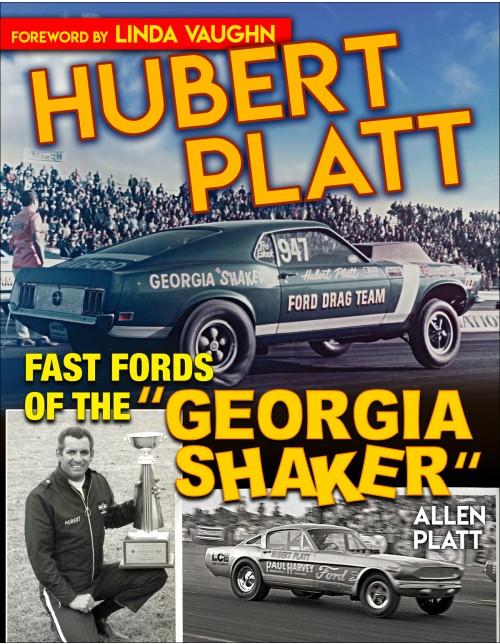
Webster’s Dictionary lists the term showman as “a notably spectacular, dramatic, or effective performer.” In the art of drag racing, Hubert Platt checked all boxes. Known as the “Georgia Shaker,” Platt cut his motoring teeth on the long straightaways and twisty back roads of South Carolina while bootlegging moonshine. After a run-in with the law in 1958, Platt transferred his driving skills from illegal activity to sanctioned drag racing and began one of the most dominant runs in drag racing history until his retirement in 1977.
After stints in 1957, 1938, and 1962 Chevrolets, Platt’s next ride was a Z11 Impala, which carried his first “Georgia Shaker” moniker. Once Chevrolet pulled out of sanctioned racing, Platt found a new home with Ford for 1964 and remained there until he hung up his helmet. Some of the cars he campaigned became icons in their own right. His factory-backed and personal machines included a 1963 Z11 Impala, 1964 Thunderbolt, 1965 Falcon, 1966 Mustang Funny Car, 1967 Fairlane 427, 1968-1/2 Cobra Jet, 1969 CJ Mustang, 1970 427 SOHC Mustang, and 1970 Boss 429 Maverick.
A 1986 NHRA Hall of Fame member, Platt’s lasting legacy on the sport can’t be denied. Whether he was launching his Falcon with the door open, conducting a Ford Drag Team seminar, or posting low E.T. at the 1967 US Nationals in his Fairlane, Platt’s imprint on drag racing was all-encompassing. His son and biggest fan, Allen Platt, shares his dad’s iconic career in, Hubert Platt: Fast Fords of the “Georgia Shaker”!
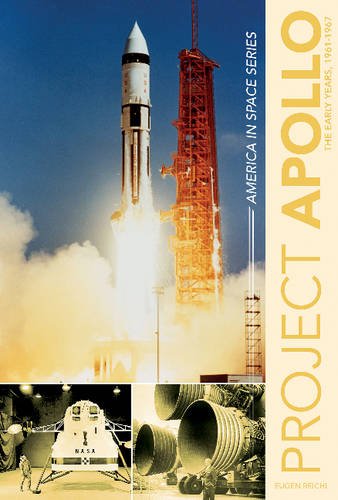
In May 1961, American president John F. Kennedy committed the nation to carrying out a manned landing on the moon before the end of the decade. This volume covers the early years of the Apollo program (1960-1967), still the most significant space effort in the history of mankind. In a very short time, NASA developed the mighty Saturn rockets, the Apollo spacecraft, and the lunar lander. This breathtaking development came at a cost, however, as in 1967 astronauts Virgil Grissom, Roger Chaffee, and Edward White lost their lives during a test. Ten months after the catastrophe, however, the Saturn V, America s moon rocket, made its triumphal unmanned maiden flight. After that, just twenty more months would pass before man set foot on another celestial body for the first time.

In just two-and-a-half years, beginning in 1964, two unmanned and ten manned flights took place in the Gemini program. This program was the turning point in the space race with the USSR; from then on the Americans took the lead. Flights lasting two weeks, into the Van Allen Belt, the first extravehicular activities, rendezvous maneuvers and docking with other spacecraft―all of this was achieved by Gemini, paving the way for the more demanding moon landing program. It was not all success, however. Like almost every significant undertaking, Project Gemini also had its dramas and tragedies. All Project Gemini missions are discussed, including details on all craft and the astronauts involved. Superb color, archival images,cutaways and plans are also included.

Project Mercury was America’s entry into the manned spaceflight program. When the program began in 1958, the Soviet Union was far ahead of the US in the race for supremacy in space. With immense effort, and in record time, NASA, the newly created spaceflight organization, developed a space transport system with orbital capsule and booster rockets. They used it to send Alan Shepard on a first suborbital “jump” into space in May 1961, and in February 1962 to make John Glenn the first American astronaut to orbit the earth. Nevertheless, the Americans were beaten by the Soviets in the race to put the first man into space. Project Mercury was, however, the foundation for NASA’s later success in the race to the moon. All Project Mercury missions are discussed, including details on all craft and the astronauts involved. Superb color, archival images, cutaways and plans are also included.
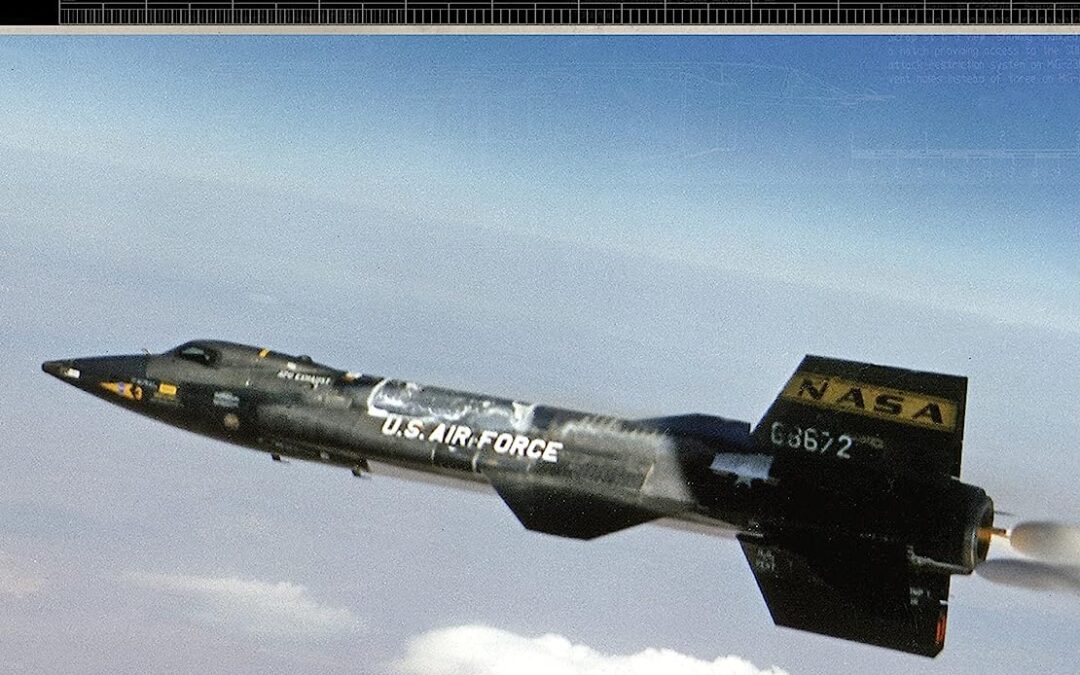
The revolutionary X-15 remains the fastest manned aircraft ever to fly. Built in in the two decades following World War II, it was the most successful of the high-speed X-planes. The only recently broken ‘sound barrier’ was smashed completely by the X-15, which could hit Mach 6.7 and soar to altitudes above 350,000ft, beyond the edge of space. Several pilots qualified as astronauts by flying above 50 miles altitude in the X-15, including Neil Armstrong, the first man on the Moon. The three X-15s made 199 flights, testing new technologies and techniques which greatly eased America’s entry into manned space travel, and made the Apollo missions and Space Shuttle viable propositions. With historical photographs and stunning digital artwork, this is the story of arguably the greatest of the X-Planes.
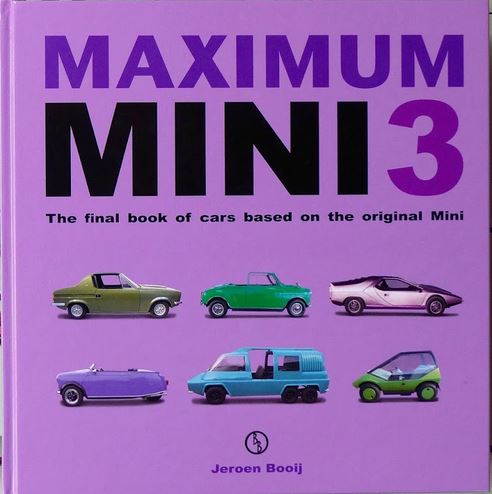
The final book in the Maximum Mini series, already now referred to as the Mini’s ‘Trilogy of Terrors’…
So, what to expect?
Another 128 pages full of Mini based cars, in a hardback similar in size and lay-out as the first two volumes. Yes. But that’s where the similarities end. This one is quite different from what you have seen before.
Where all of the known and slightly lesser known cars were covered in detail over a two-page spread each in the first two books, this one features a lot more of them. 397 More Mini derivatives to be precise. Yes. 397. It has become a bit of an encyclopedia of obscurities and you’ll be surprised to find out what else the Mini’s multipurpose mechanicals brought forth. Trikes, twinis, racers, coachbuilt specials, beach cars, buggies, jeeps and a dragster, oh yes. But there are also also Mini powered fire engines, crop sprayers, ice cream vans, camper vans, motorkhana specials, miniature buses and wacky marketing mobiles. There is a Wood & Pickett trimmed four-door Mini which did the grueling 16,000-mile World Cup Rally in 1970 and a three-wheeler that was designed and built by the chief stylist of Rolls-Royce and Bentley in his spare time. There are Mini Moke based movie vehicles from Moonraker and UFO, The Persuaders and The Prisoner.
Apart from the UK the vehicles featured in this book originate from Ireland, the US, Canada, Australia, New Zealand, Scotland, Germany, Malta, Japan, Italy, France, Greece, Portugal, South-Africa, Belgium, The Netherlands, Spain, Barbados, Denmark, Uruguay, Chile and Switzerland.
limited edition of 600 numbered pieces

Few launch vehicles are as iconic and distinctive as NASA’s behemoth rocket, the Saturn V, and none left such a lasting impression on those who watched it ascend. Developed with the specific brief to send humans to the Moon, it pushed rocketry to new scales. Its greatest triumph is that it achieved its goal repeatedly with an enviable record of mission success. Haynes’ Saturn V Manual tells the story of this magnificent and hugely powerful machine. It explains how each of the vehicle’s three stages worked; Boeing’s S-IC first stage with a power output as great as the UK’s peak electricity consumption, North American Aviation’s S-II troubled second stage, Douglas’s workhorse S-IVB third stage with its instrument unit brain – as much a spacecraft as a rocket. From the decision to build it to the operation of its engines’ valves and pumps, this lavishly illustrated and deeply informative book offers a deeper appreciation of the amazing Saturn V

The Gemini space flight program is all but forgotten, having been eclipsed by the spectacular drama and success of the Apollo flights to the Moon. Neither was it a pioneer, coming after the heroic and pathfinding Mercury project. But whereas Mercury was derided as ‘spam-in-a-can’ and Apollo was a truck towing a lunar lander, the Gemini spacecraft was an agile flying machine for fighter pilots. Initially called the Mercury Mark II, it gave the United States the tool it needed to learn how to fly in space, and in so doing it prepared the country’s space agency, NASA, to set off for the Moon.

SOLD OUT
The Rocket Manual tells the story of rocket motors, how they were first developed, how they work, what they are used for and how they are operated. It also explains the origin and operating record of satellite launchers around the world. Rocket motors large and small are listed and explained, including small motors used to push satellites and spacecraft into different orbits, throttleable rockets for controlling spacecraft descending to the Moon and the surfaces of other planets, restartable motors for adjusting orbits and reusable motors such as those developed for the Shuttle.
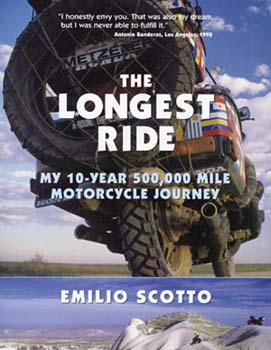
For his eighth birthday, Emilio Scotto received a World Atlas. Promptly he announced his plan to make a route that would pass through all the countries of the world, a route he named BLUE ROAD ONE. When, some years later, he found himself astride a black 1100 Honda Gold Wing motorcycle, Blue Road One beckoned, and Scotto set off on a journey that would last more than a decade, take him virtually everywhere in the world, and land him in the Guinness Book of World Records. This is his story, a thrill ride that begins in his native Argentina, crosses Panama in the tumultuous time of Noriega, Mexico in the midst of an earthquake, and finds him broke in L.A. where, in a chance meeting, Muhammad Ali gives him fifty dollars and a signed book. Breaching the Iron Curtain, crossing the Berlin Wall at Checkpoint Charlie, being blessed by the Pope, set upon by cannibals in Sierra Leone, fleeing Somalia on a freighter, Scottos adventures would be unbelievable if they werent true. His tale of touring the world from Tunisia to Turkey, Petra to Afghanistan, Yugoslavia to Singapore, traveling miles enough to take him to the moon and back, is unlike any ever told. Come along, for the ride of a lifetime.

“Today’s NASCAR is a family sport with 75 million loyal fans, growing bigger and more mainstream by the day. Part Disney, part Vegas, part Barnum& Bailey, NASCAR is also a multi-billion dollar business and a cultural phenomenon that transcends geography, class, and gender. But dark secrets lurk in NASCAR’s past.
Driving with the Devil uncovers for the first time the true story behind NASCAR’s distant, moonshine-fueled origins and paints a rich portrait of the colorful men who created it. Long before the sport of stock-car racing even existed, young men in the rural, Depression-wracked South had figured out that cars and speed were tickets to a better life. With few options beyond the farm or factory, the best chance of escape was running moonshine. Bootlegging offered speed, adventure and wads of cash – if they survived. Driving with the Devil is the story of bootleggers whose empires grew during Prohibition and continued to thrive well after Repeal, and of drivers who thundered down dusty back roads with a car full of corn liquor, deftly out-running federal revenuers. The vehicle of choice was the Ford V-8, the hottest car of the 1930s, and ace mechanics tinkered with them until they could fly across mountain roads at 100 miles an hour.
After fighting in World War II, moonshiners transferred their skills to the rough, red-dirt race tracks of Dixie, and a national sport was born. In this dynamic era (1930s and 40s), three men with a passion for Ford V-8s – convicted felon Raymond Parks, foul-mouthed mechanic Red Vogt, and crippled war vet Red Byron, NASCAR’s first champion – emerged as the first stock car “”team.”” Theirs is the violent, poignant story of how moonshine and fast cars merged to create a new sport for the South to call its own.
Driving with the Devil is a fascinating look at the well-hidden historical connection between whiskey running and stock-car racing. NASCAR histories will tell you who led every lap of every race since the first official race was held in 1948. Driving with the Devil goes deeper to bring you the excitement, passions, crime, and death-defying feats of the wild, early days that NASCAR has carefully hidden from public view. In the tradition of Laura Hillenbrand’s Seabiscuit, this tale not only reveals a by-gone era of a beloved sport, but also the character of the country at a moment in time.”
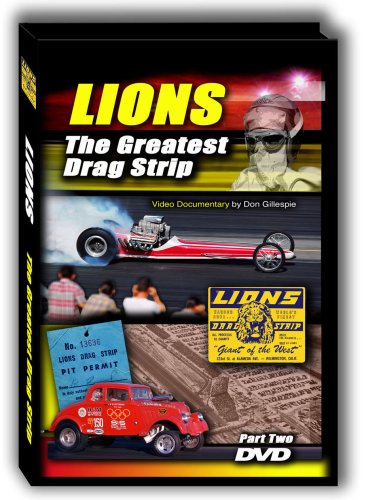
Historical Documentary’s 2nd Volume on One of Drag Racing’s Greatest Tracks; Rare Film, Photos, Interviews with Its Pioneers.
In-depth documentary combines rare film clips and incredible photography with firsthand accounts. Long Beach, CA-based track was pivotal in the sport’s early growth, with many of the great names taking part in carving history. The latest installment by veteran motorsports journalist Don Gillespie picks up speed in 1962, when nitro cars returned after a 5-year ban under founding manager, Mickey Thompson. The (1-HR, 40-MIN) presentation concludes near the end of ’66, with explosive growth in dragsters, supercharged coupes, early funny cars, etc. In 1962 newly formed 7-second dragster teams included Greer-Black & (Don) Prudhomme, plus “TV” Tommy Ivo, both among more than two-dozen interviewed on camera. Roland Leong recounts his accident in the “Hawaiian”. Don Garlits recalls a colorful match race involving Chris Karamesines. Rick Stewart, shown in a breathaking finish line crash, recounts waking up in the hospital as the Watts Riots began. “Wild Willie” Borsch explains how he drove his fuel altered using one hand, from uncovered audiotape. Other appearances include Tom McEwen, John Force, Gene Mooneyham, Larry Sutton, C.J. Hart, Ed Iskenderian, Ralph Guldahl, Jr., Don Prieto, Dave Wallace, Pat Foster, Paula Murphy, Ronnie Rapp, Dale Armstrong, Chris Karamesines, and many others. Top Fuel dragsters also reached 200 MPH. Match race draws included the Willys coupes of Stone-Woods-Cook versus “Big John” Mazmanian, the stands packed to capacity. Stockers evolved into altered wheelbase machines; carbs to injectors, gas to nitro, then blowers – and funny cars were born. Emerging, too, were breathtaking streamliners, exhibition cars, junior fuelers, gas and fuel altereds, coupes, motorcycles, etc. Mickey Thompson’s departure saw C.J. “Pappy” Hart take over, whom promptly ended NHRA sanction. Soon, epic, rival AHRA dual stocker/dragster championships took place, plus the racer-formed UDRA held a series of events of similar national caliber.






















